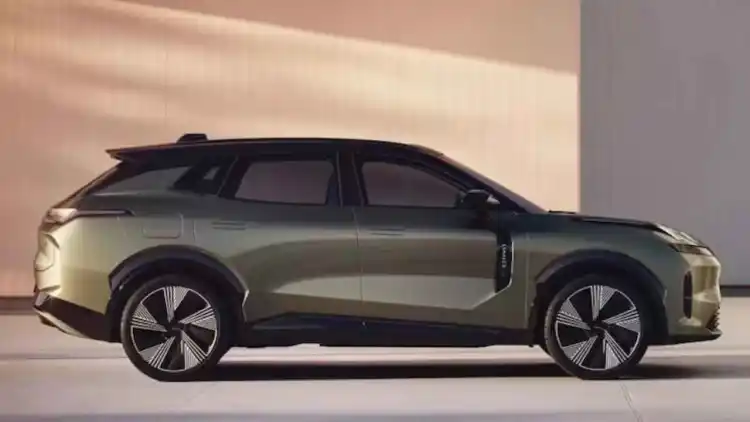- Headline Findings
- Structural Integrity Breakdown
- Secondary Safety Lapses
- Test Explanation: The Overlap Assessment
- Dongfeng Box vs. Rivals
- “The False Promise of Shine”
- Areas Under Investigation
- Industry Context: Not All Chinese EVs Are Unsafe
- Expert Opinions
- Broader Implications
The promise of affordable smart mobility took a hit this week when China’s Dongfeng Box EV performed poorly in the 2025 Euro NCAP crash tests. Despite its trendy electric design and cutting-edge digital features, structural failures during testing exposed major safety flaws that could put passengers at risk.

The compact hatchback—marketed as an urban rival to the Renault 5 and BYD Dolphin—scored three out of five stars, well below its competitors’ four- and five-star ratings. Euro NCAP’s findings raise serious questions about how well some budget Chinese EVs are protecting their occupants in real-world crashes.
Headline Findings
Overall Score: 3 stars
Adult Occupant Protection: 69%
Child Occupant Protection: 67%
Vulnerable Road User Protection: Poor
Key Issues: Spot-weld failure, weak airbag deployment, jammed doors
“The Dongfeng Box failed to match the safety performance of other small EVs tested under the same conditions,” Euro NCAP noted in its post-test report.

Structural Integrity Breakdown
During the front offset crash test—a key simulation mimicking a 50% car-to-car collision at 50 km/h—multiple spot welds failed in the Box’s chassis structure. This failure allowed deformation around the passenger cell, weakening occupant protection.
Euro NCAP Warning: “Such weld failures could expose passengers to severe injury or compression risks at higher-speed impacts.”
Additionally, airbag inflation inconsistencies were observed. The steering wheel airbag deployed with insufficient pressure, allowing the dummy driver’s head to contact the rim—resulting in heightened head injury readings.

Secondary Safety Lapses
Equally concerning was the failure of the automatic door unlocking function following the crash. Experts noted that “jammed doors could delay emergency extraction,” putting victims and rescuers at additional risk.
The Box also lacked a crucial front-seat passenger interaction restraint, which prevents two occupants from colliding with one another during side impacts. This absence, now a Euro NCAP expectation for new EVs, cost it heavily in the final safety assist rating.
Test Explanation: The Overlap Assessment
This particular test is part of the Mobile Progressive Deformable Barrier (MPDB) procedure—one of the toughest examinations of vehicle integrity. It replicates a 50% overlapping head-on collision between two cars moving at 50 km/h each. Such accidents are statistically responsible for most fatal road injuries worldwide.
While other similarly priced EVs like the BYD Dolphin and Lynk & Co 02 maintained cabin stability under stress, Dongfeng’s Box exhibited visible frame distortion. Euro NCAP labeled the chassis “unstable and inconsistent.”
Dongfeng Box vs. Rivals
“The False Promise of Shine”
A customer in Milan bought the new Dongfeng Box, drawn by its minimalist design and affordable price. Months later, the same model starred in safety headlines—for all the wrong reasons.
“If looks could protect,” a tester commented, “then the Box would be safe. But good design can’t fix fragile steel.”
This story isn’t fiction for Euro NCAP—it’s the reality reflected in the lab’s crushed panels and bent welds. The Box’s failures underline an ongoing debate: when price becomes the selling point, can safety still compete?

Areas Under Investigation
Euro NCAP’s detailed breakdown revealed specific weak points:
Compromised Weld Points: Dozens of failed structural joins in key crumple zones.
Dashboard Contact: Driver dummy’s knees and legs hit dashboard panels.
Rescue Barriers: Door jams blocking post-collision exit attempts.
Side-Impact Gaps: No lateral in-cabin collision prevention between front passengers.
Airbag Delay: Frontal airbag reached only partial inflation before impact rebound.
The organization urged Dongfeng to strengthen weld points and improve airbag algorithms before resubmission.
Industry Context: Not All Chinese EVs Are Unsafe
To its credit, Dongfeng isn’t alone—some global models also scored low. VW’s T-Cross crossover earned just three stars under the same framework. However, other Chinese automakers are raising the bar. For example, Chery’s Tiggo 7 and 8 SUVs recently won five stars after revising faulty rear airbags spotted in earlier tests—showing how fast these companies can improve.
This contrast within China’s EV sector highlights a growing divide between high-efficiency engineering and cost-driven shortcuts.
Expert Opinions
Automotive safety engineer Lars Müller commented:
“Chinese manufacturers are rapidly advancing, but inconsistencies between brands remain wide. The Box’s weak welds suggest outdated manufacturing controls, not lack of capability.”
Another Euro NCAP representative noted that electric cars with extended structural cavities (to accommodate batteries) require doubled weld strength and better adhesive bonding to avoid similar failures.
Broader Implications
With Europe tightening import regulations and consumer expectations, safety performance could determine which Chinese EVs succeed overseas. Low ratings not only limit market appeal but may also affect insurance premiums and resale potential.
Despite the setback, Dongfeng’s engineers are reportedly already evaluating a reinforced version of the Box, hinting at a retest in early 2026.
In 2025’s Euro NCAP results, the Dongfeng Box EV exposed the growing pains of new entrants in Europe’s electric market. Ambitious on style but fragile under stress, it serves as a reminder: flashy tech doesn’t replace strong engineering.




